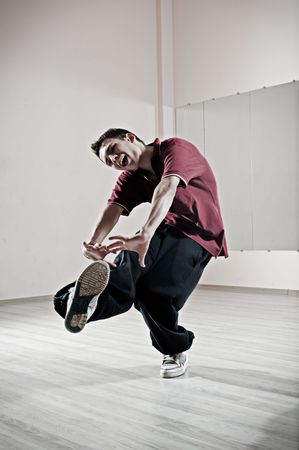1. The Executive Edge: What is Feng Shui and Why Does It Matter?
Feng Shui, pronounced “fung shway,” is an ancient Chinese practice that focuses on arranging spaces to create balance, harmony, and positive energy flow—known as “chi.” While its origins are thousands of years old, Feng Shui has gained traction in modern settings worldwide, including executive offices and boardrooms across the United States.
Understanding Feng Shui in the American Corporate Context
In a fast-paced corporate environment, executives face constant pressure to make sound decisions and maintain high performance. The design and organization of their workspace can either support or hinder these goals. Feng Shui offers practical solutions by aligning the physical environment with the executive’s needs, boosting well-being, focus, and even leadership qualities.
Why Should Executives Care?
Modern American workplaces are increasingly recognizing the impact of environmental psychology. Just as ergonomic chairs and standing desks have become standard, integrating Feng Shui principles can bring measurable benefits to leaders and teams alike. Here’s how Feng Shui connects with key business outcomes:
| Feng Shui Principle | Business Benefit | Example in Boardroom Setting |
|---|---|---|
| Clutter-Free Spaces | Improved Focus & Productivity | Clear tables for meetings; organized storage for files |
| Balanced Lighting | Mood Enhancement & Reduced Fatigue | Natural light or adjustable LED lighting options |
| Strategic Desk Placement | Empowered Decision Making | Executive desk facing the entry door (“command position”) |
| Incorporating Nature | Stress Reduction & Creativity Boost | Addition of plants or artwork depicting landscapes |
| Cohesive Color Schemes | Brand Alignment & Energy Regulation | Using company colors thoughtfully in décor and accents |
The Relevance in American Boardrooms Today
Adapting Feng Shui doesn’t mean making your office look like a temple. It’s about using subtle shifts in layout, color, light, and décor to foster a more supportive environment for executives. As organizations embrace holistic approaches to leadership development, integrating Feng Shui principles can give American businesses a new edge—helping top leaders stay sharp, resilient, and ready for any challenge.
2. Designing for Success: Feng Shui Basics for the Modern Boardroom
Understanding Feng Shui in the American Boardroom Context
Feng Shui, an ancient Chinese practice, focuses on harmonizing people with their environments to boost well-being and productivity. When applied to a modern American boardroom, Feng Shui isn’t about adding mystical objects but about making thoughtful choices in layout and decor that naturally support executive performance and decision-making.
Essential Feng Shui Principles for Boardrooms
To create a balanced and high-performing boardroom, start with these core principles:
1. Command Position
The command position is where leaders can see the entry door without being directly in line with it, creating a sense of security and authority. In American boardrooms, this means placing the main chair or the CEO’s seat diagonally across from the entrance while keeping a solid wall behind for support.
2. Balanced Layout and Flow
A clutter-free room encourages clear thinking. Arrange furniture to allow easy movement and open sight lines between participants, promoting collaboration and transparent communication—a value at the heart of American business culture.
3. The Five Elements for Energy Balance
Feng Shui uses five elements—wood, fire, earth, metal, and water—to keep energy (Qi) flowing positively. Here’s how you can incorporate these elements in a way that fits typical American office aesthetics:
| Element | Boardroom Feature | American Decor Example |
|---|---|---|
| Wood | Growth & Creativity | Sleek wooden conference table or planters with greenery |
| Fire | Passion & Leadership | Accent lighting or art with warm tones (red/orange) |
| Earth | Stability & Support | Ceramic vases or natural stone coasters |
| Metal | Clarity & Focus | Metallic frames or brushed steel fixtures |
| Water | Communication & Flexibility | Pictures of lakes/rivers or a small desktop fountain |
4. Lighting Matters
Naturally lit rooms boost alertness and mood. If windows aren’t available, use adjustable LED lighting to mimic daylight. Layered lighting not only enhances comfort but also aligns with contemporary American office design trends.
5. Color Choices for Focus and Calm
Select colors that encourage focus—such as muted blues, soft greens, or neutral grays—while incorporating brand colors as accents to reinforce company identity. Avoid overly bright or distracting patterns.
Practical Tips for Implementation
- Declutter regularly: Keep surfaces clear to prevent mental fatigue.
- Add plants: Choose low-maintenance options like succulents to bring life without extra work.
- Sit strategically: Ensure leaders have supportive seating positions but all voices are visible around the table.
- Edit artwork: Use positive, inspiring images that align with company values.
- Avoid sharp corners: Use rounded furniture edges when possible to soften energy flow and reduce tension.
By blending these Feng Shui basics with familiar American office aesthetics, any boardroom can become a space that supports better executive performance and sharper decision-making.

3. Boosting Decision-Making: The Psychological Impact of Feng Shui
How Feng Shui Shapes Executive Thinking
Feng Shui is more than just arranging office furniture—it’s a strategic approach to creating spaces that support mental clarity, effective teamwork, and sound decision-making. In American boardrooms, where fast-paced decisions and complex collaborations are the norm, subtle changes in the environment can make a significant difference. Let’s explore how Feng Shui concepts align with psychological research to help executives perform at their best.
The Link Between Space and Cognitive Clarity
Studies show that cluttered or poorly organized environments can increase stress levels and reduce focus. Feng Shui emphasizes open layouts, natural light, and balanced décor, all of which contribute to mental clarity. According to workplace psychology research, executives working in well-lit, organized spaces report better concentration and fewer mistakes. Here’s how some common Feng Shui principles impact cognitive performance:
| Feng Shui Principle | Psychological Benefit | Workplace Example |
|---|---|---|
| Clear Desk Policy | Reduces distractions; improves focus | Tidy workstations for executives |
| Natural Elements (plants, sunlight) | Lowers stress; boosts creativity | Adding greenery and maximizing windows in boardrooms |
| Balanced Layout (Yin-Yang) | Promotes calmness; supports clear thinking | Symmetrical seating and décor in meeting areas |
| Proper Chair Placement (Command Position) | Enhances confidence; encourages active participation | Positioning executive chairs to face the door but not directly in line with it |
Feng Shui and Teamwork Dynamics
A harmonious boardroom layout can encourage open communication and trust among team members. Psychology studies confirm that physical proximity, round tables, and equal access to resources foster collaboration. By applying Feng Shui principles like circular seating arrangements and equal lighting for all participants, leaders can create an inclusive atmosphere where every voice is heard.
The Science Behind Better Decision-Making
Research from Harvard Business Review shows that decision fatigue is real—executives make better choices when their environment minimizes stress and distractions. Feng Shui’s focus on order, light, and positive energy flow helps combat this fatigue by keeping minds sharp and moods stable during long meetings or critical discussions.
Key Takeaways for Executives:
- Simplify your workspace: Keep only essential items on your desk to boost clarity.
- Add natural touches: Plants or water features can enhance creativity and reduce anxiety.
- Create balance: Arrange furniture for smooth movement and visual harmony.
- Empower your team: Use round tables or balanced layouts to promote equality in discussions.
Integrating these Feng Shui strategies with insights from workplace psychology gives executives a practical toolkit for improving cognitive function, fostering stronger teams, and making confident decisions under pressure.
4. Leadership Energy: Personalized Feng Shui for Executives
Why Personalization Matters in the Boardroom
Every executive brings a unique set of strengths, leadership styles, and energy to the boardroom. Applying personalized Feng Shui strategies helps create an environment where each leader can thrive, improving both their decision-making and team influence. By tailoring Feng Shui principles to individual needs, executives can enhance their presence, productivity, and overall well-being.
Key Areas to Personalize for Executive Success
| Feng Shui Element | Personalization Tip | Boardroom Benefit |
|---|---|---|
| Desk Placement | Position your seat with a solid wall behind you and a clear view of the door. | Increases authority and control over meetings. |
| Lighting | Use adjustable lamps or natural light; avoid harsh overheads. | Boosts alertness and reduces stress. |
| Personal Items | Add meaningful photos or symbols that inspire confidence. | Strengthens personal motivation and focus. |
| Color Scheme | Select accent colors based on personal energy (e.g., blue for calm, red for action). | Influences mood and enhances communication style. |
| Plants & Nature | Include a small plant or water feature near your workspace. | Improves air quality and creative thinking. |
| Decluttering | Keep only essential items within arm’s reach; remove distractions. | Enhances clarity and faster decision-making. |
The Power of Customizing Your Space
No two leaders are alike. Some may need more stimulation to stay energized during long meetings, while others perform best in calm, minimalist surroundings. Personalized Feng Shui supports these differences by encouraging executives to adjust their workspaces according to what makes them feel most empowered. For example:
- The Visionary: Might prefer a vibrant painting or bold statement piece as inspiration.
- The Strategist: May benefit from subtle earth tones and organized filing systems for focus.
- The Connector: Could keep family photos or awards close by for encouragement during tough decisions.
Easy Steps to Start Personalizing Your Boardroom Presence
- Identify Your Leadership Style: Are you collaborative, decisive, innovative? Let your space reflect this.
- Select Supportive Elements: Choose colors, textures, and objects that match your personal energy needs.
- Create a Routine: Spend a few moments each day organizing your area and refreshing your chosen elements.
- Evaluate & Adjust: Regularly assess how your space affects your performance and make tweaks as needed.
Your Personal Feng Shui Toolkit
A well-personalized boardroom setting doesn’t require major renovations. Small changes—like moving your chair or adding a favorite piece of art—can make a big difference in how you lead and make decisions. Take time to experiment with different Feng Shui adjustments until you find the perfect balance for your executive role.
5. Implement & Inspire: Actionable Steps for Creating a Feng Shui Boardroom
Step-by-Step Guide for American Executives
Transforming your boardroom into a space that encourages clear thinking, balanced decision-making, and team innovation doesnt require a complete renovation. By applying key Feng Shui principles in simple, actionable ways, you can create an environment where executives thrive. Here’s how to get started:
Step 1: Assess the Current Space
- Walk through the room: Notice lighting, clutter, flow of movement, and overall feel.
- Ask for feedback: Gather input from board members about what feels inspiring or distracting.
Step 2: Optimize Room Layout with the Bagua Map
The Bagua Map is a foundational Feng Shui tool that divides a room into nine energy zones. Use it to position furniture and features with intention.
| Bagua Zone | Location in Boardroom | Purpose & Suggestions |
|---|---|---|
| Wealth & Prosperity | Back left corner from entry | Add healthy plants or artwork representing growth |
| Fame & Reputation | Center back wall | Display awards or mission statement here |
| Relationships | Back right corner | Add paired objects, like two chairs or art pieces |
| Family & Community | Left center wall | Add group photos or community recognition items |
| Health & Balance | Center of room | Keep open and uncluttered; consider a round table centerpiece |
| Creativity & Innovation | Right center wall | Add whiteboards or inspiration boards for brainstorming sessions |
| Knowledge & Wisdom | Front left corner from entry | Add bookshelves or industry magazines here |
| Career & Life Path | Main entrance area | Use welcome mats or motivational signage here |
| Helpful People & Travel | Front right corner from entry | Add thank-you notes from clients or global maps showing company reach |
Step 3: Maximize Natural Light and Air Quality
- If possible, use window treatments that let in daylight.
- Add air-purifying plants like snake plants or peace lilies.
- Avoid blocking windows with bulky furniture.
Step 4: Choose the Right Boardroom Table and Seating Arrangement
- Avoid sharp corners; round or oval tables promote inclusivity and flow.
- The CEO or meeting leader should sit facing the entrance (the “command position”) for confidence and control.
- Avoid having anyone’s back directly to the door to reduce stress and distraction.
Step 5: Declutter and Organize Regularly
- Remove unnecessary items from surfaces before each meeting.
- Create designated storage areas for tech devices, papers, and supplies.
- Simplify visual distractions—less is more for focus and clarity.
Nurturing a Culture of Balance and Innovation
Create Rituals That Reinforce Positive Energy
- Start meetings with a moment of gratitude or intention-setting.
- Add calming elements like a small water fountain or soothing artwork.
- Celebrate successes in ways that reinforce teamwork (e.g., group appreciation notes).
Encourage Open Communication and Adaptability
- Create feedback loops so all voices are heard during meetings.
- Pilot small changes—like rearranging seating—and invite input on what works best.
- Praise creative ideas and encourage risk-taking in discussions.
Your Balanced Boardroom Checklist:
| Action Item | Status (✔/✗) |
|---|---|
| Brought in natural light and live plants? | |
| Tidied up clutter before meetings? | |
| Tried new seating arrangements? | |
| Brought in inspiring art or company values display? | |
| Sought team feedback on the new layout? | |
| Kicked off meetings with a positive ritual? | |
| Piloted one new idea to improve energy flow? | |
| Praised creative thinking out loud? | |
| Sensed improved mood and collaboration? |
This hands-on approach helps American executives blend time-tested Eastern wisdom with modern workplace needs—creating a boardroom that energizes leadership, sparks innovation, and supports confident decision-making every day.


